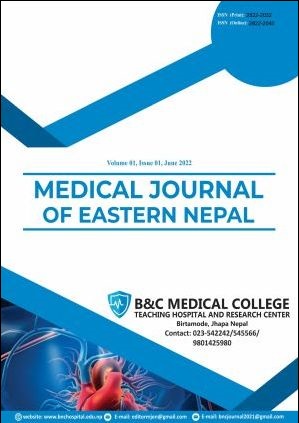MR Imaging Evaluation of Perianal fistulae
DOI:
https://doi.org/10.3126/mjen.v1i1.45853Keywords:
Perianal fistula, MRIAbstract
Background: Perianal fistula is a troublesome condition both for patient and surgeon with significant morbidity and challenging treatment. MRI is considered as the technique of choice for preoperative evaluation of perianal fistulae, as it provides accurate anatomical information for appropriate surgical treatment, decreasing the incidence of recurrence and allowing side effects such as fecal incontinence to be avoided. The study aimed to describe the role of magnetic resonance imaging (MRI) in the diagnosis and classification of perianal fistulae.
Methods: This retrospective study looked at 52 patients referred to the radiology department with a clinical diagnosis of perianal fistula. MRI grading of anal fistula done according to St. James’s University Hospital classification.
Results: The MRI showed 46 internal openings in 44 patients; two patients had more than one. The internal opening was mostly at the 6 o’clock position in 59.9% patients, followed by 7 o’clock and 5 o’clock position in 11.3% of patients. According to the St. James’s University Hospital classification, 21 (47.7%) patients had grade 1, 11 (25%) patients had grade 2, 2 (4.5%) had grade 3, 7 (15.9%) had grade 4, and 4 (9%) had grade 5 fistulae. Twenty-five patients had associated abscesses. The most common location of the abscess was in the perianal region (8 patients).
Conclusions: MR imaging examinations is a highly accurate imaging method for preoperative evaluation perianal fistula. It provides precise information of the fistulous track, along with its relationship to pelvic structures and plays crucial role for surgical planning.
Downloads
Downloads
Published
How to Cite
Issue
Section
License
Copyright (c) 2022 B & C Medical College and Teaching Hospital and Research Centre

This work is licensed under a Creative Commons Attribution-NonCommercial 4.0 International License.
CC BY: This license allows reusers to distribute, remix, adapt, and build upon the material in any medium or format, so long as attribution is given to the creator. The license allows for commercial use.




